Calculating apparent viscosity vs. absolute viscosity for parenteral products
Why is viscosity important for parenteral products?
Small volume parenteral products are injected intradermally, subcutaneously, intramuscularly, or intravenously. Fluid viscosity impacts the gauge of needle and plunger pressure needed to deliver the therapy to a patient. Products with high viscosity require specialized equipment for filling. Additionally, high viscosity products may require special equipment for patient therapy delivery. Luckily, there are ways to calculate the viscosity of your product. Apparent viscosity equations, apparent viscosity formulas (with apparent viscosity units), and absolute viscosity formulas (with absolute viscosity units) will be covered in this article.
What is a Newtonian vs. a non-Newtonian fluid?
A Newtonian fluid is a fluid where the stresses from fluid flow are linearly correlated to the strain rate. With Newtonian fluids, the viscosity is constant no matter the shear rate or applied shear stress experienced by the fluid.
In contrast, non-Newtonian fluids decrease (shear thinning) or increase (shear-thickening) viscosity when shear is applied. Most fluids of low molecular weight are Newtonian fluids. In contrast, high molecular weight fluids (such as suspensions and emulsions) are generally non-Newtonian. Shear-thinning occurs in water-based hydrocolloid solutions.
On the other hand, shear-thickening occurs in concentrated suspensions of nonaggregating solid particles (solid particles that don’t stick to each other in solution).
What is the difference between rheometers vs. viscometers, and which rheometer do you need to measure non-Newtonian fluids?
Viscometers are a subset of rheometers that only measure steady shear flow (and corresponding Newtonian viscosity). Viscometers are often referred to as relative rheometers. The functionality of relative rheometers is geometry-dependent. Thus, any non-Newtonian fluid data taken with a relative rheometer will be approximate and not comparable between rheological instruments. As a result, relative rheometers should not be used to evaluate non-Newtonian fluids. Instead, absolute rheometers should be used to create programs and assess non-Newtonian fluids. Absolute rheometers allow for geometrically accurate analysis of fluid deformation and flow. Thus, non-Newtonian fluid data from absolute rheometers can be compared from instrument to instrument.
How do you calculate Newtonian vs. non-Newtonian viscosity?
Viscosity is the measure of a fluid’s resistance to flow. The amount of flow resistance a fluid has is based on the internal molecular interacts of the fluid and the magnitude of the external stress applied to the liquid. While Newtonian fluid viscosity varies depending on temperature alone, non-Newtonian fluids have different viscosities depending on shear rate, shear stress, and temperature. Newton’s law defines the relationship between applied stress, σ, and the resultant fluid flow with a shear rate (velocity gradient) of ̇γ. Suspensions or emulsions containing macromolecular components do not obey Newton’s law and require consideration of the entire Herschel-Bulkley equation. The Herschel-Bulkley equation below can calculate apparent viscosities only for fluids whose viscosity is not time-dependent. In other words, the Herschel-Bulkley equation can determine viscosities for pseudoplastic and dilatant fluids. However, the Herschel-Bulkley equation cannot calculate rheopectic (time-dependent shear-thickening) or thixotropic (time-dependent shear-thinning) fluids.
For the Herschel-Bulkley equation, the flow behavior index cannot be infinite. For shear-thinning fluids, the flow behavior index is greater than zero but less than one. Shear-thickening fluids have a flow behavior index of above one. Many non-Newtonian fluids do not have a yield stress of σ0 because the flow will occur even at very low shear stresses.
The Herschel–Bulkley equation can describe both Newtonian and non-Newtonian fluids (apparent viscosity formula and absolute viscosity formula:
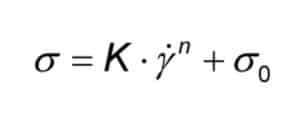
Where:
σ = shear stress, in Pascals (Pa)
K = consistency coefficient (or the coefficient of viscosity in Pa*s) for absolute viscosity units and apparent viscosity units
̇γ = shear rate, in s−1
n = the flow behavior index
σ0 = yield stress, in Pa
For Newtonian fluids, K is the same as the coefficient of viscosity (η). As the viscosity of Newtonian fluid viscosity is independent of the shear stress or shear rate, the flow behavior index, n, is one for Newtonian fluids. Also, Newtonian fluids do not have yield stress, so the Herschel-Bulkley equation reduces to the following absolute viscosity equation for Newtonian fluids.
The coefficient of viscosity (absolute viscosity), η, as defined by Newton’s law of viscous flow:
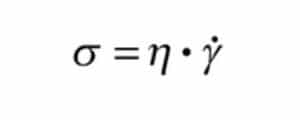
Where:
σ = shear stress, the applied stress resulting in material layers to move relative to each other
γ = shear rate, the rate of change of shear strain with time
Kinematic viscosity, ν, in square meters per second for a Newtonian fluid at a constant temperature is:
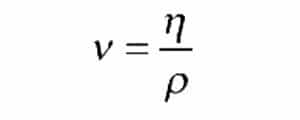
Where:
ρ= fluid density
η = coefficient of viscosity
How do you measure absolute and apparent viscosity for capillary viscometers and rotational rheometers?
Capillary viscometers
Glass capillary viscometers come in two flavors. These flavors are a suspended level and a U-tube capillary viscometer (Ostwald-type viscometers). Temperature variations do not easily influence the suspended-level viscometer. Thus, it is recommended over a U-tube viscometer. More information on capillary viscometers can be found in our capillary viscometry article here.
Absolute viscosity formula for viscosity (η ) can be calculated with a known fluid density with Poiseuille equation:
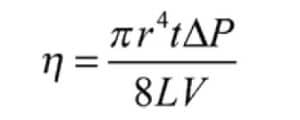
Where:
t= flow time
V= fluid volume
L=capillary tube length
ΔP= applied differential pressure
r= capillary tube radius
The applied pressure differential, ΔP, is calculated:
ΔP = (h1 − h2) × g × ρ (4)
Where:
ρ= fluid density
h1 = height of the fluid in the tube at line 1 measured from the bottom position
h2 = height of the fluid in the tube at line 2 measured from the bottom position
g = gravitational acceleration (standard value = 9.80665 m · s−2)
Kinematic viscosity, ν, can be calculated:
ν = k × t – (E/t2)
Where:
E = kinetic energy factor, in mm2 · s
k= viscometer constant
t= time (s)
For constants k and E, the flow time for a Newtonian liquid standard of known viscosity (at a given temperature) can be used to calculate the viscometer constant for that temperature. Calculated viscometer constants are accurate until the dimensions of the viscometer’s capillary change. All capillary viscometers can measure the viscosity of Newtonian fluids. However, most capillary viscometers are incapable of measuring the apparent viscosity of non-Newtonian fluids. Extrusion capillary viscometers allow for varying shear rates or shear stresses. Thus, they are an exception and can be used to measure the apparent viscosities of non-Newtonian fluids. However, the equation above is primarily an absolute viscosity formula.
Capillary viscometers
For non-Newtonian liquids, the shear stress, σ, or the shear rate, ̇γ, at which the viscosity is measured, must be recorded as viscosity values will vary based on the shear stress and shear rate experienced by the fluid. When considering parenteral products, the fluid’s anticipated shear stress or shear rate as it leaves a syringe needle or catheter would accurately determine the product’s viscosity when in use.
The following equations can be used to calculate the shear rate, shear stress, and viscosity when concentric cylinder rheometers satisfy absolute rheometer conditions (i.e., when the gap between the concentric cylinders is tiny).
Shear rate, γ, in s-1 is calculated:
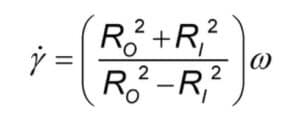
Shear stress, σ, in Pa is calculated:

Apparent viscosity formula for viscosity, η, in apparent viscosity units (Pa*s) is calculated:

Where:
Ro = radius of the outer cylinder (m)
RI = radius of the inner cylinder (m)
ω = angular velocity (radian/s)
M = torque acting on the cylinder surface (N . m)
h = height of immersion of the inner cylinder in the liquid medium (m)
k = constant of the apparatus (radians/m3)
And where angular viscosity is calculated using the following equation:
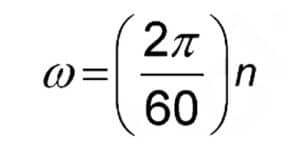
Where:
n = rotational speed, in revolutions per min (rpm)
Note: apparent viscosity units and absolute viscosity units are the same (Pa*s)
Cone-and-plate rotational rheometers
The following equations can be used to calculate the shear rate, shear stress, and apparent viscosity when cone-and-plate rheometers satisfy absolute rheometer conditions.
Shear rate, γ, in s-1 is calculated:

Shear stress, σ, in Pa is calculated:
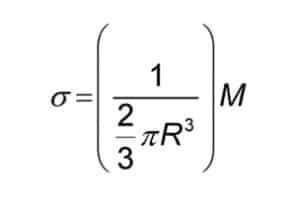
Apparent viscosity formula for viscosity, η, in apparent viscosity units (Pa*s) is calculated:

Where:
α = angle between the flat plate and the cone (radians)
R = radius of the cone (m)
ω = angular velocity (radian/s)
M = torque acting on the cylinder surface (N . m)
k = constant of the apparatus (radians/m3)
Note: apparent viscosity units and absolute viscosity unites are the same (Pa*s)
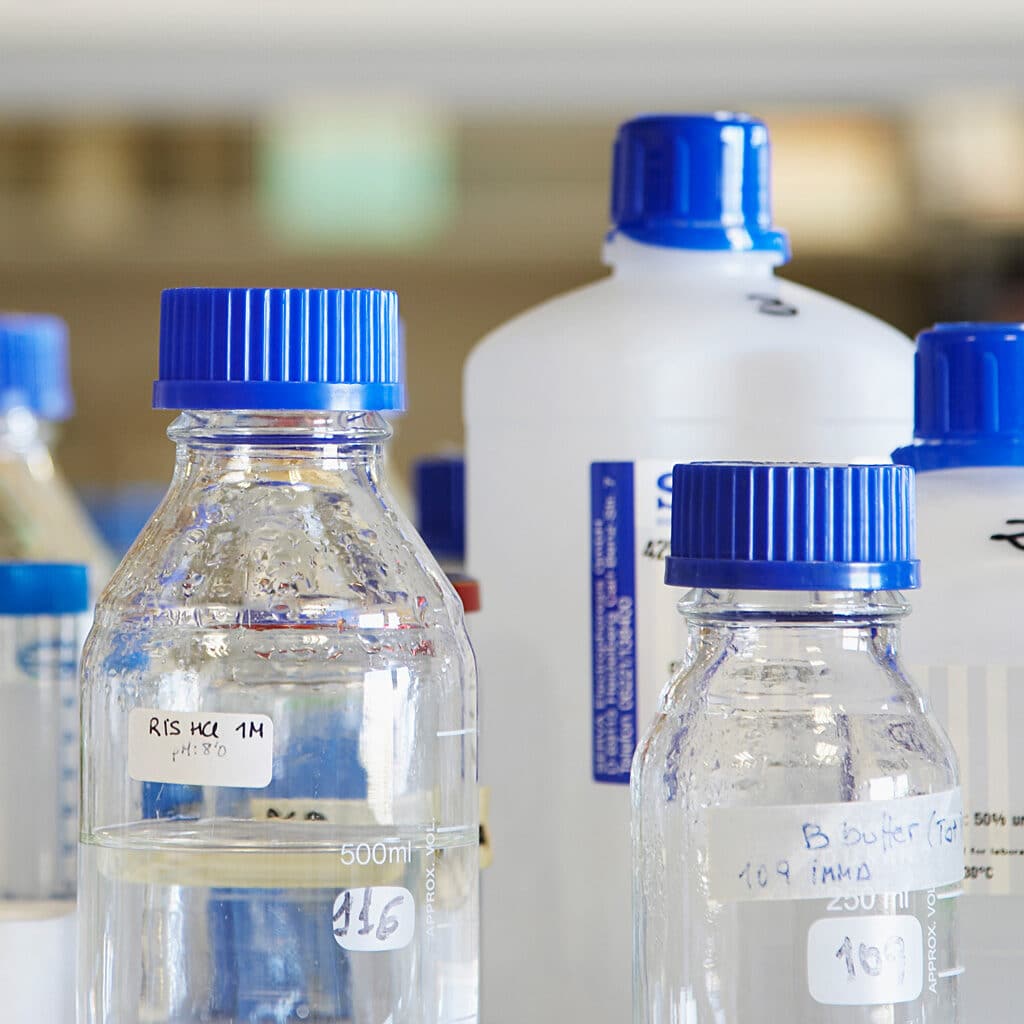
Summary
Overall, viscous injectable formulations often have high concentrations of large molecules or non-aqueous solvents. With large protein biologics popularizing the drug therapy market, viscosity calculations for viscous products are essential for determining delivery mechanisms and accurately filling parenteral products. A Newtonian fluid is a fluid where the stresses from fluid flow are linearly correlated to the strain rate. This article details calculations for the absolute viscosity of Newtonian fluids and the apparent viscosity of non-Newtonian fluids. Most fluids of low molecular weight are Newtonian fluids. In contrast, high molecular weight fluids (such as suspensions and emulsions) are generally non-Newtonian. All in all, when filling a thick parenteral or cosmetic product, ensure you choose a contract manufacturing organization to support your sterile filling needs.
MycoScience is a contract manufacturing organization specializing in sterile syringe and vial filling. MycoScience also offers Preservative Efficacy Testing, Sterilization Validations, Bioburden Testing, Cleaning Validations, Microbial Aerosol Challenge Testing, Accelerated Aging, Microbiology Testing, Cytotoxicity Testing, Bacterial Endotoxin Testing, EO Residual Testing, Package Integrity Testing & Environmental Monitoring services medical devices and allied industries. MycoScience is an ISO 13485 certified facility.
References
United States Pharmacopeial Convention. <1911> Rheometry. Rockville, MD, USA. 2021. (USPC <1911>).
Sharing this in your social netwroks

